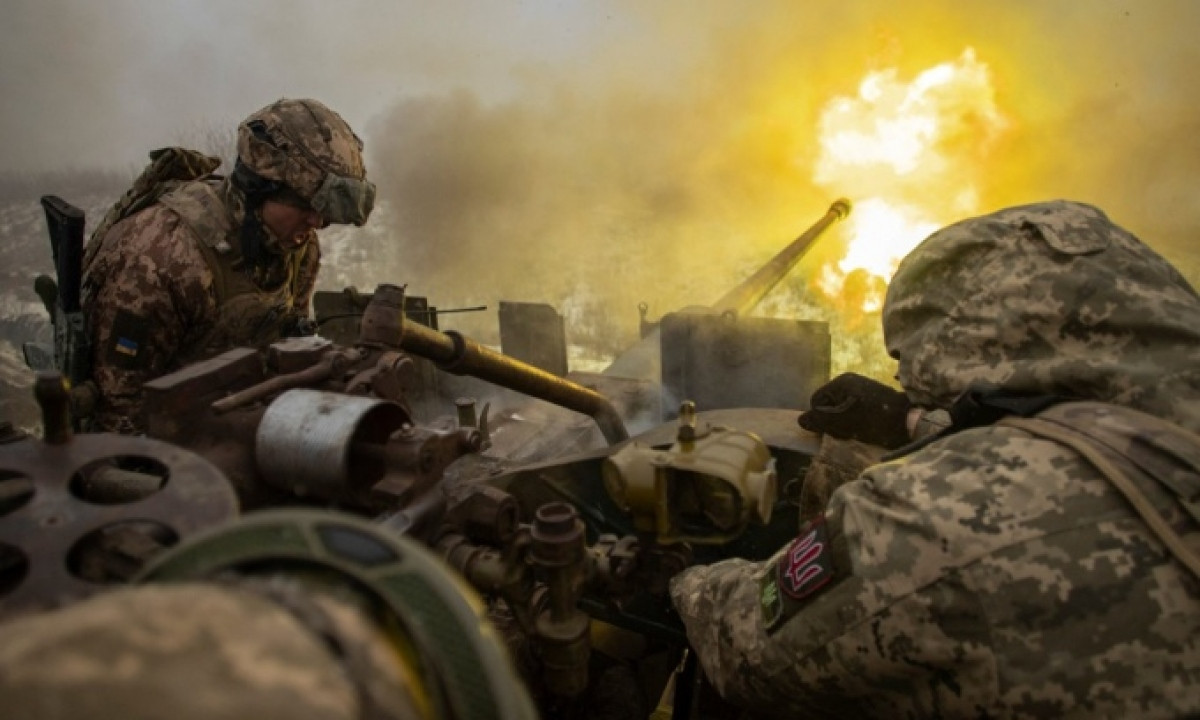Ukraine's Spring Counter-Offensive is Narrowing
Ukrainian officials hope the spring counteroffensive will be a major turning point in helping Kiev regain lost territories and give Ukraine and the West important leverage in peace talks with Russia.
There is no sign that Ukraine is ready to launch this counter-offensive even though the spring is almost over. Russia is trying to strengthen its defenses in the East. Both sides are currently in a stalemate on the battlefield.
 |
Ukrainian soldiers fire at Russian positions on the front line near the city of Bakhmut, Donetsk region, on January 15. Photo: Reuters |
The window of opportunity for Ukraine is narrowing.
In an interview with the Washington Times, US government officials said that the overarching goal of the US is still to put Ukraine in the strongest negotiating position with Russia, while affirming that any negotiations must take place on terms and at a time that is suitable for Ukraine.
The West believes that Ukraine’s spring offensive, which will begin in the fall of 2022 and will push Russian forces out of the east and south, will be a key turning point in the conflict in Kiev’s favor. The broader hope is that Ukraine can push Russia out of its territory entirely and force the Kremlin to end its special military operation. But analysts note that Ukraine and its Western partners may have to wait until the ground is firmer and movement is easier.
But if Ukraine’s counteroffensive fails or fails, the situation on the ground and the attitudes of Washington and other countries across Europe could change rapidly, leaving Ukraine with few options and facing Western pressure to end the fighting and concede some territory to Russia.
“The facts will dictate what actually happens,” said Jim Townsend, former US Deputy Assistant Secretary of Defense for European and NATO Policy. “If Ukraine’s counter-offensive fails or fails to achieve much, the US government may not ask them to pursue negotiations.”
“It’s a game of time, space and political will. The government won’t intervene and won’t make any demands because it’s all decided by others, not them,” Mr. Townsend said.
In the early days of the conflict, administration officials talked about how the conflict could be ended at the negotiating table, arguing that Ukraine needed to be in a strong bargaining position when negotiations began. But public discussion of Russia-Ukraine talks has quietened over the past nine months, especially after Ukraine launched a major offensive in the fall of 2022 to seize the key cities of Kharkiv and Kherson. At that point, the West appeared to have changed its mind, believing that the hope of a Ukrainian victory was not too far-fetched.
The United States has repeatedly said its position on the Russia-Ukraine conflict has not changed. In conversations with the Ukrainian leader, US officials said their focus was on providing support, not forcing Kiev to the negotiating table or proposing specific terms for a peace deal.
The turning point battle
Ukrainian officials say they are still taking the necessary steps for a major counter-offensive. “We are approaching a turning point in the history of Ukraine,” Kyrylo Budanov, head of Ukraine’s military intelligence, told RBC-Ukraine. “The exact moment of the battle is still a secret. But everyone understands that we are getting closer to the decisive moment.”
Meanwhile, Russia appears to be preparing for a potential Ukrainian counter-offensive. The Russian military has halted its offensive across eastern and southern Ukraine, except for Bakhmut, and is focusing on strengthening its defenses in areas it controls by widening trenches, building more bunkers and booby traps. Western analysts say Russia’s change in strategy is paying off. According to British intelligence estimates, the average Russian casualty toll per day has fallen from 776 in March to 568 in April.
As fighting continues to rage, many officials in the Biden administration believe that Ukraine may not have enough manpower and weapons to push Russia out of its territory in the upcoming counteroffensive. General Mark A. Milley, Chairman of the US Joint Chiefs of Staff, said: “This is an extremely important and very difficult task. There are currently hundreds of thousands of Russians still in territories controlled by Moscow.” Meanwhile, leaked classified documents from the US Department of Defense also gave less promising assessments of the chances of a breakthrough in the spring counteroffensive.
Ukrainian generals have not yet revealed the specific target or location of the counteroffensive. Some experts believe Kiev is likely to launch a counteroffensive eastward, in the Donbass, or create a feint toward the Sea of Azov in the south, cutting off the bridge connecting the Crimean peninsula to mainland Russia. A successful Ukrainian attack in the south, in the Zaporizhzhia region, would split Russian-controlled territory in two, putting Crimea, the Russian naval base at Sevastopol, and the Kerch bridge within range of Ukrainian artillery.
But Crimea is one of Russia’s most heavily defended areas, and US military officials say it would be extremely difficult for Ukraine to take control of the peninsula, even if it could push Russian forces out of Donbass.


